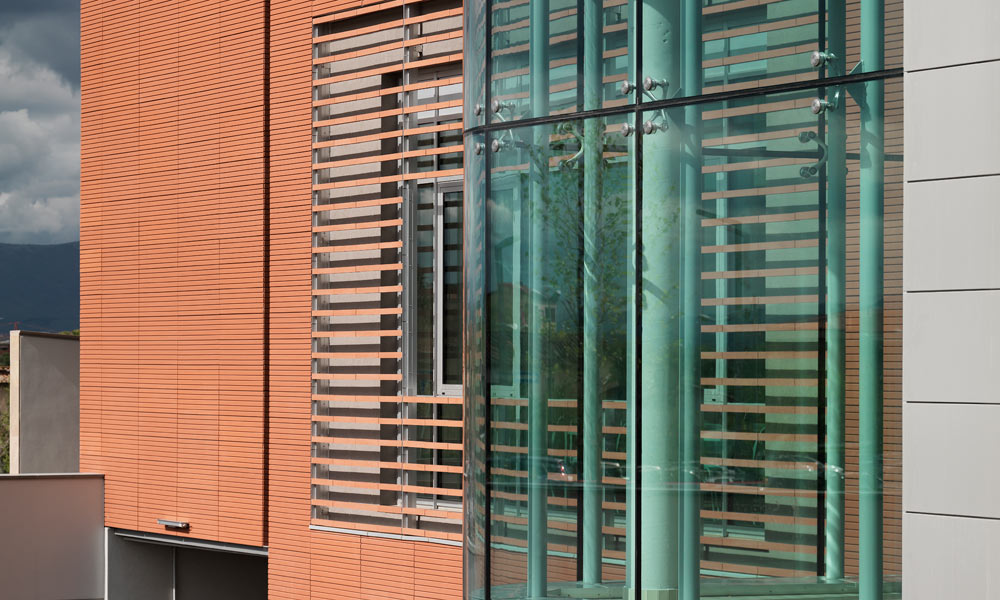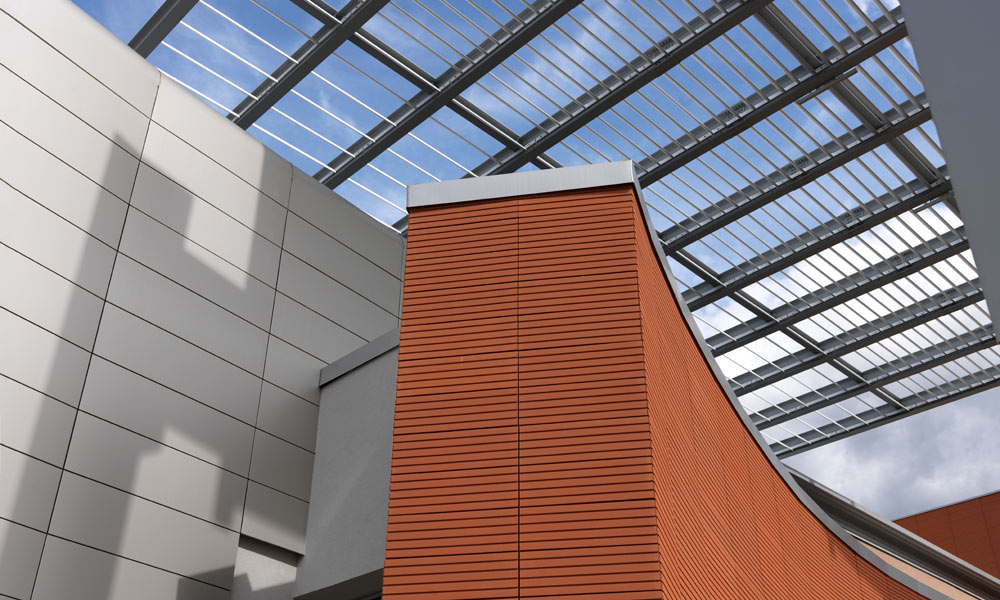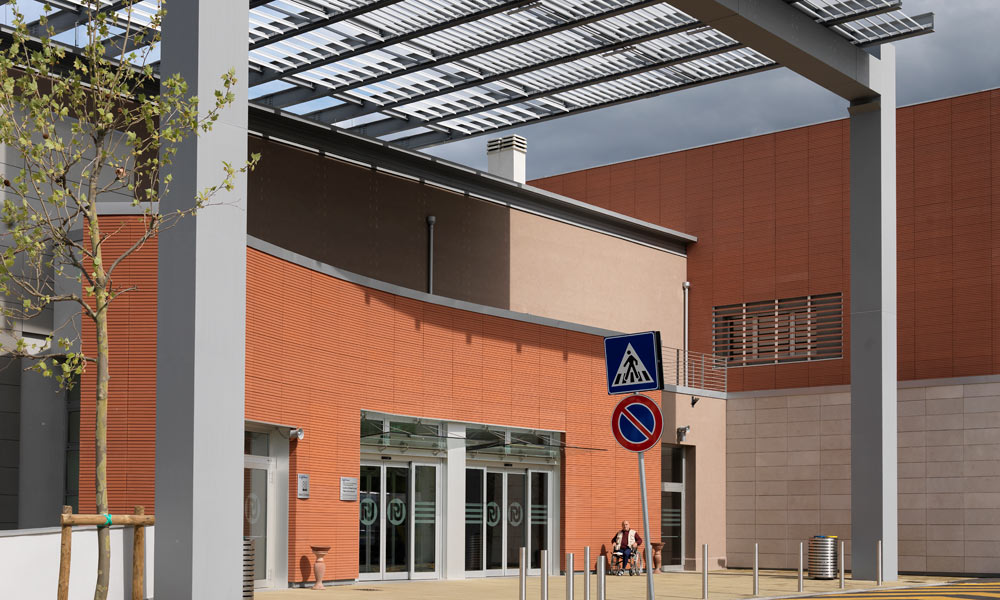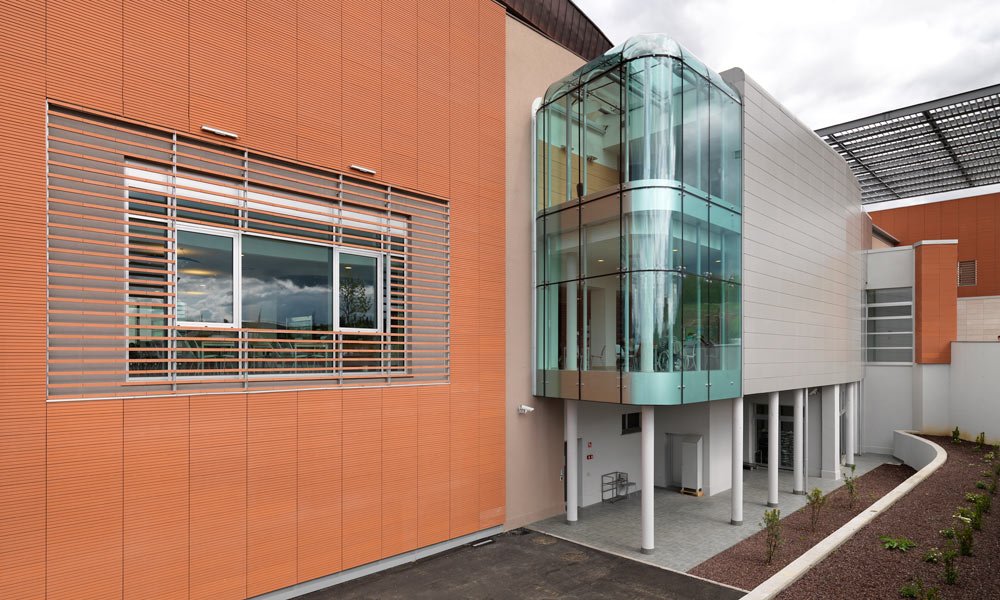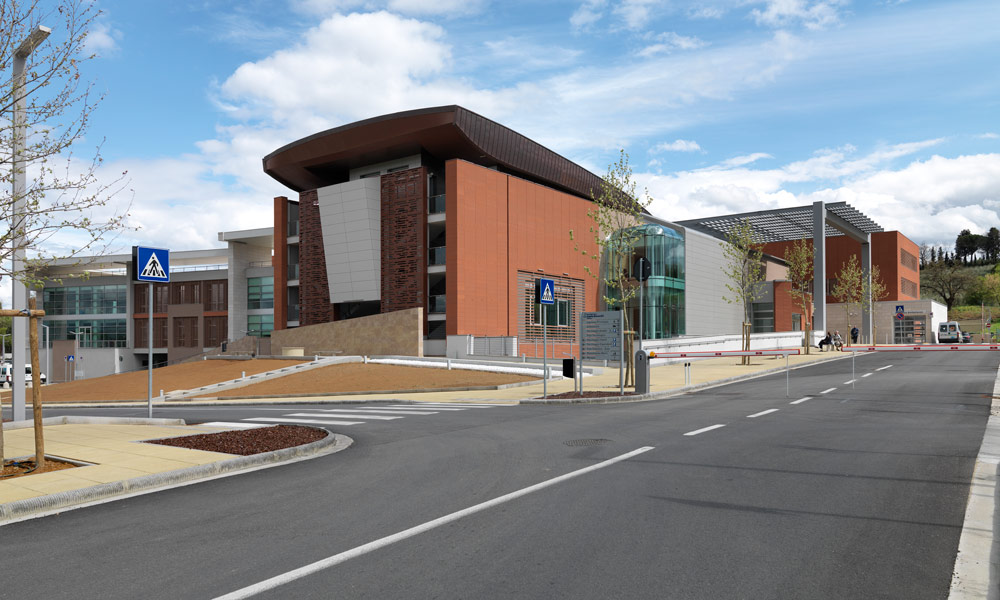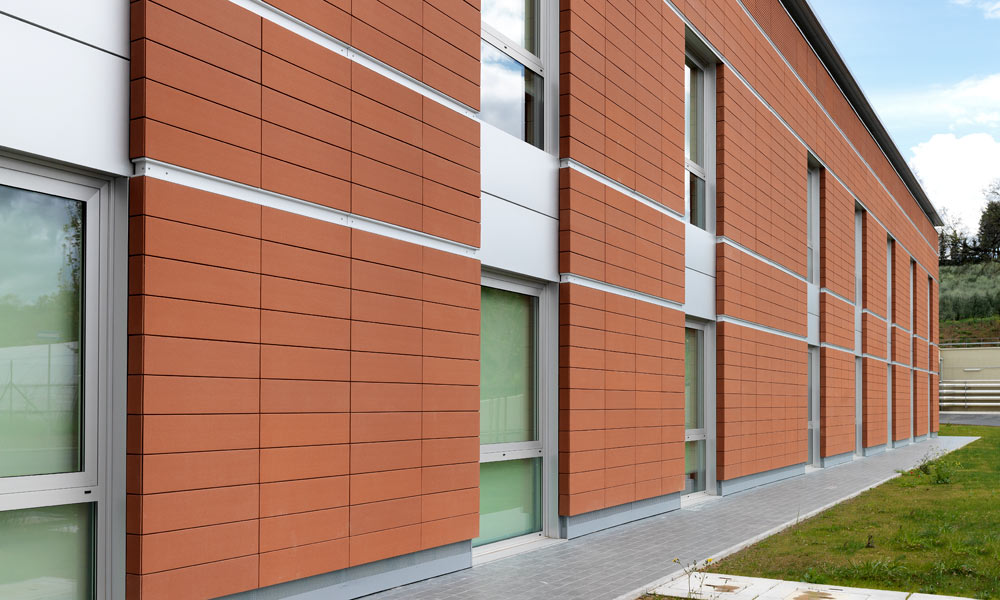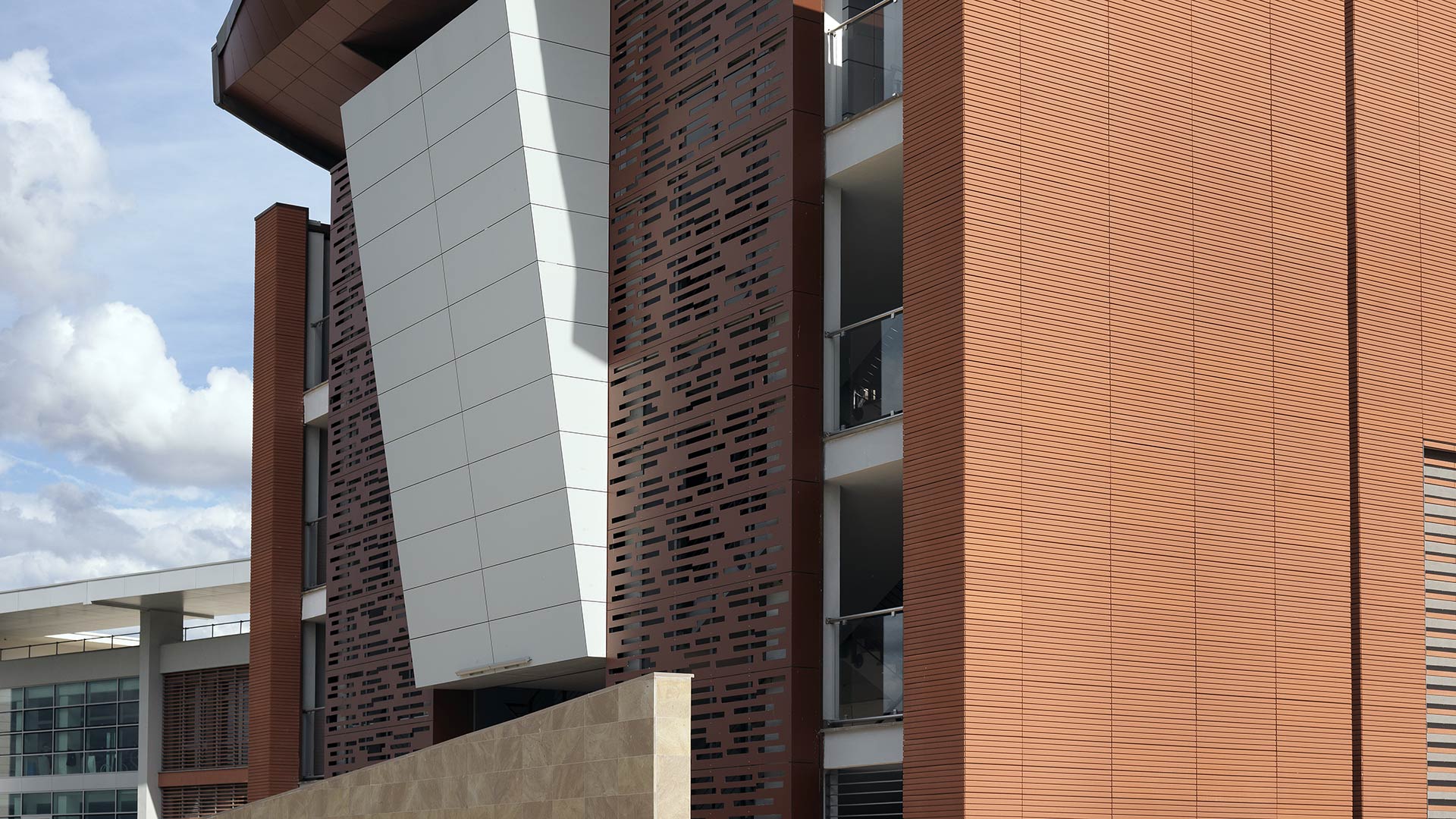
IRCCS Don Gnocchi – Florence – IT
PORTFOLIO
Location Firenze, Italia
Year 2011
Designers Salvatore Romano, Andrea Santini, Francesco Martella
Contractor Impresa Pessina Costruzioni S.p.A.
The centre, named after Don Gnocchi, is a rehabilitation centre of excellence at European level; it was designed with innovative techniques, focusing on sustainability and giving priority to the use of renewable materials, installing solar and photovoltaic panels and designing an external ventilated wall. The intervention of Palagio Engineering, in addition to a strong characterization of the external appearance of the building by using materials such as terracotta, grolla marble and alucobond, Riverlack and Trespa, allows to maintain an ideal temperature inside the building and so to assure maximum comfort
6000 sqm of ventilated facade in terracotta cover the lateral areas and the back of the building as well as the curved portion located at the main entrance of the hospital complex. The elements Terrablock and TerraBlockR have a length of 110 cm and a sandblasted surface finish with a natural red colour. The aesthetic particularity is the alternation between grooved elements which cover the towers of the stairwells, and smooth elements which cover those areas which house the hospital (the latter ones are followed by string courses in anodised aluminium). The fixing system for the terracotta elements, XL system by Palagio Engineering, is realized in aluminum and is engineered according to the buildings function and its location.
TECHNIQUE
700 sqm of terracotta shading composed of elements TerraTube, natural red colour with sandblasted finish, located to screen some windows as well as in the front and lateral areas as part of the overall terracotta cladding.
The Xl aluminum fixing system by Palagio Engineering was also used for the ventilated facade in “Grolla” marble, which is a white stone with venes, extracted from the Cornedo Vicentino quarries; for the ventilated facade in alucobond in champagne colour, a 300 sqm cladding characterizing the stairwell area near to the entrance which is connected to the curved profiles which reflect the lines of the bubble in glass; for the cladding in Trespa, 600 sqm of a white profile cladding the superior part of the wooden entrance on the front face of the building, and finally for the cladding realized in Riverclack, 400 sqm of white panels to cover the wooden door in the front elevation of the building.
